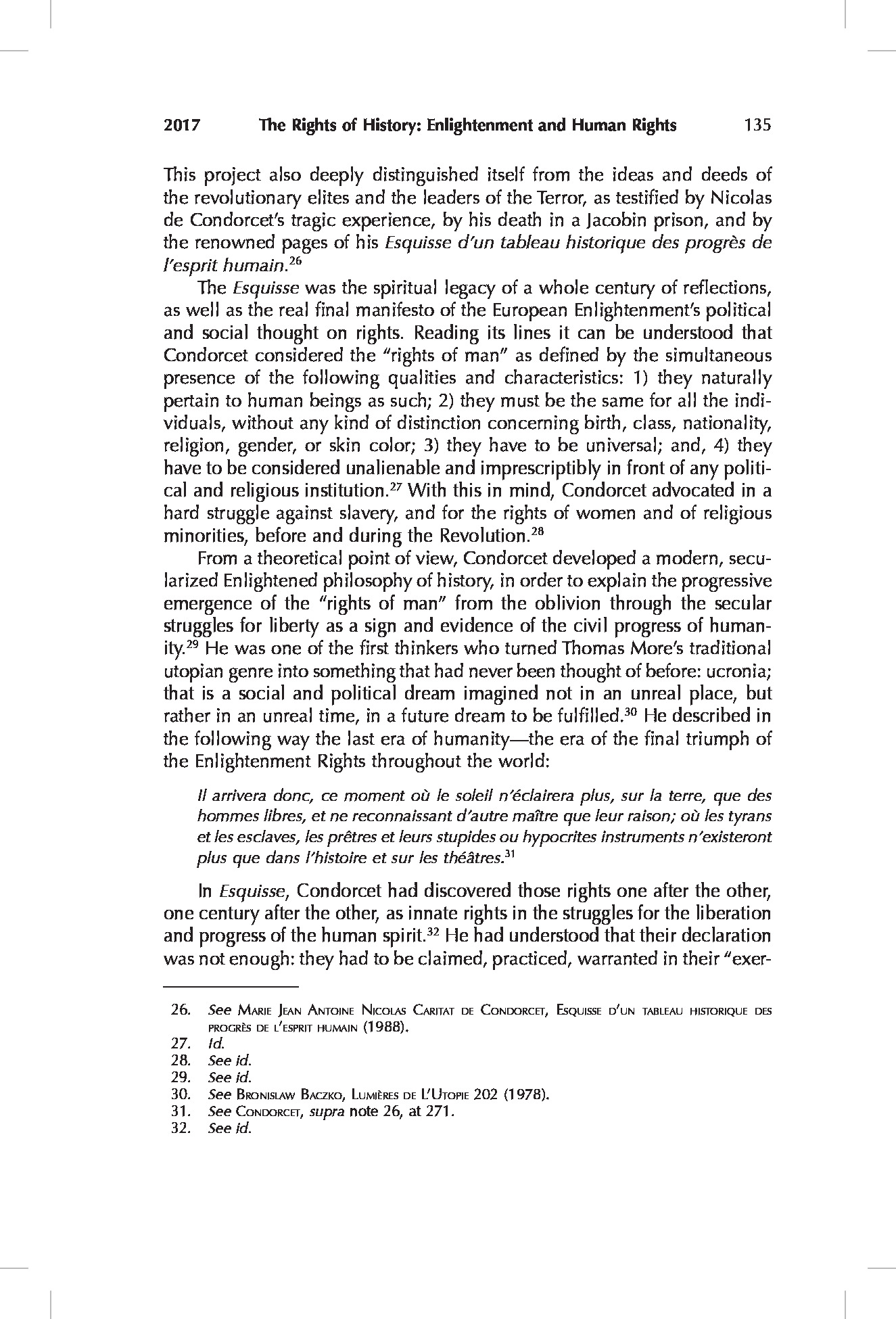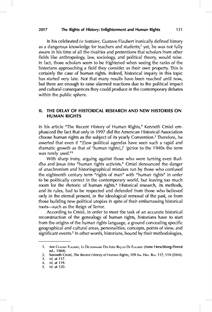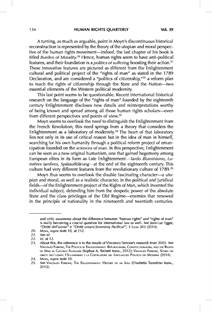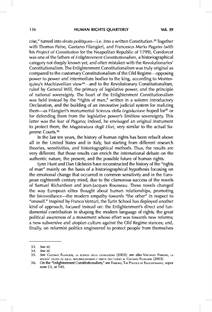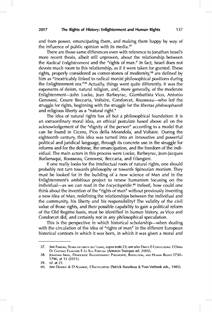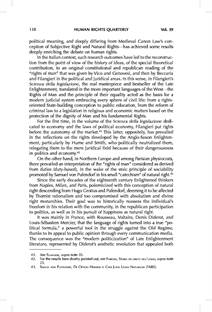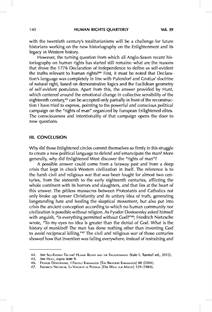2017
The Rights of History: Enlightenment and Human Rights
135
This project also deeply distinguished itself from the ideas and deeds of
the revolutionary elites and the leaders of the Terror, as testified by Nicolas
de Condorcet’s tragic experience, by his death in a Jacobin prison, and by
the renowned pages of his Esquisse d’un tableau historique des progrès de
26
l’esprit humain.
The Esquisse was the spiritual legacy of a whole century of reflections,
as well as the real final manifesto of the European Enlightenment’s political
and social thought on rights. Reading its lines it can be understood that
Condorcet considered the “rights of man” as defined by the simultaneous
presence of the following qualities and characteristics: 1) they naturally
pertain to human beings as such; 2) they must be the same for all the indi-
viduals, without any kind of distinction concerning birth, class, nationality,
religion, gender, or skin color; 3) they have to be universal; and, 4) they
have to be considered unalienable and imprescriptibly in front of any politi-
27
cal and religious institution. With this in mind, Condorcet advocated in a
hard struggle against slavery, and for the rights of women and of religious
28
minorities, before and during the Revolution.
From a theoretical point of view, Condorcet developed a modern, secu-
larized Enlightened philosophy of history, in order to explain the progressive
emergence of the “rights of man” from the oblivion through the secular
struggles for liberty as a sign and evidence of the civil progress of human-
29
ity. He was one of the first thinkers who turned Thomas More’s traditional
utopian genre into something that had never been thought of before: ucronia;
that is a social and political dream imagined not in an unreal place, but
30
rather in an unreal time, in a future dream to be fulfilled. He described in
the following way the last era of humanity—the era of the final triumph of
the Enlightenment Rights throughout the world:
Il arrivera donc, ce moment où le soleil n’éclairera plus, sur la terre, que des
hommes libres, et ne reconnaissant d’autre maître que leur raison; où les tyrans
et les esclaves, les prêtres et leurs stupides ou hypocrites instruments n’existeront
31
plus que dans l’histoire et sur les théâtres.
In Esquisse, Condorcet had discovered those rights one after the other,
one century after the other, as innate rights in the struggles for the liberation
32
and progress of the human spirit. He had understood that their declaration
was not enough: they had to be claimed, practiced, warranted in their “exer-
26. See marie Jean antoine nicolas caritat De conDorcet, esquisse D’un tableau Historique Des
ProGrès De l’esPrit Humain (1988).
27. Id.
28. See id.
29. See id.
30. See bronislaw baczko, lumières De l’utoPie 202 (1978).
31. See conDorcet, supra note 26, at 271.
32. See id.
Dettagli
- Page N°:6
- Publication:
- Author:Vincenzo Ferrone

